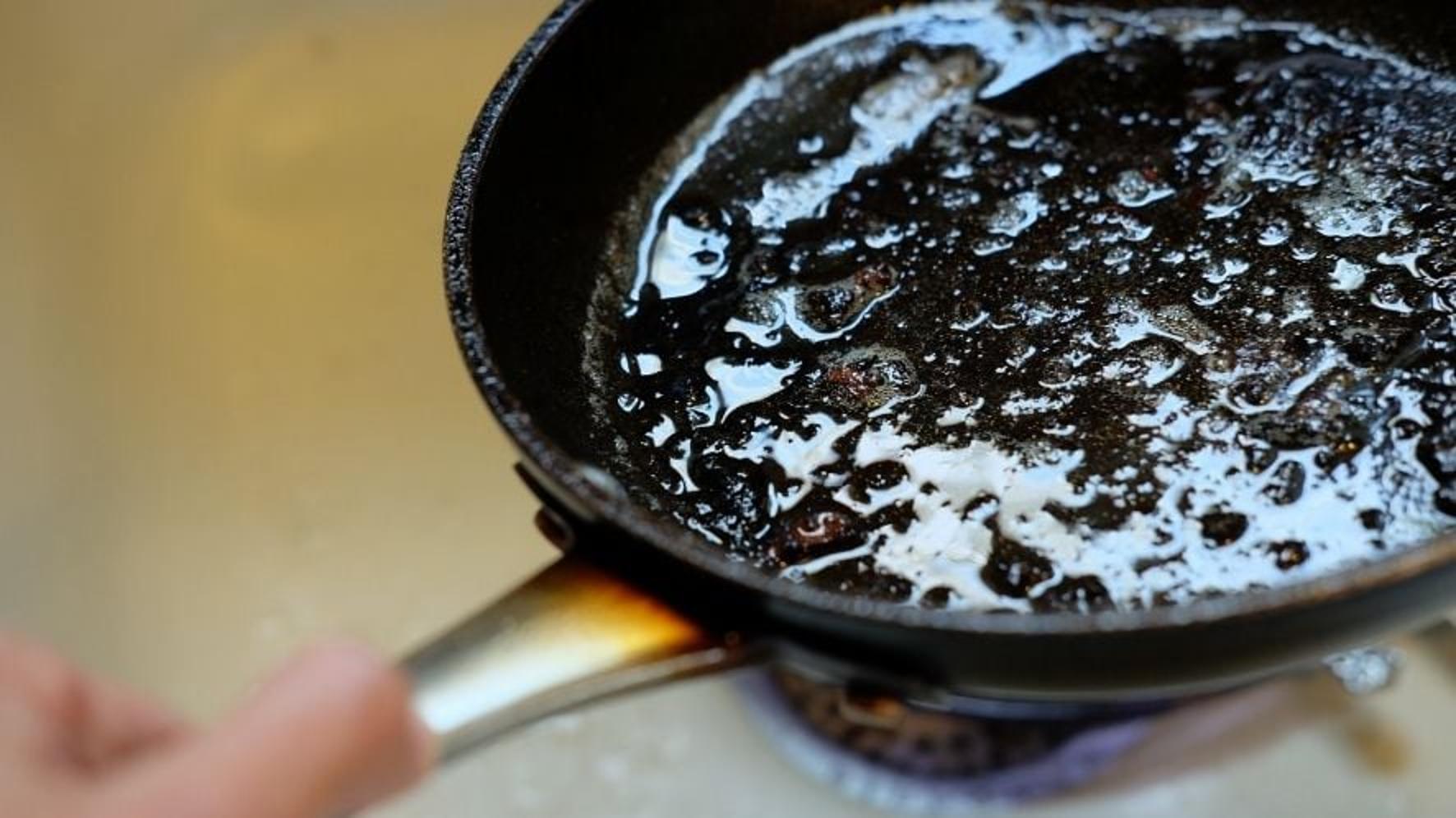Whether it’s the crisp crunch of a chip, the sizzly bits on a sausage or a scone slathered in butter, some of our favourite foods often involve fats. These delicious treats melt on the tongue but can leave oily stuff behind that needs to be disposed of carefully.
In the water industry, we call this oily stuff FOG (fats, oils and grease). It might be oil left over from frying, meat fat from a roast joint, or a bit of butter left on the edge of a plate. If FOG goes down the sink it can cling to pipes and harden, mixing with bits of food waste until the pipe gets blocked.
Why is FOG a problem?
Putting FOG down the sink can block your pipes, causing waste to back up and spill in your home. These pipes also carry waste from the toilet and shower – if they overflow, it’s not a pretty sight.
On a wider scale, FOG, is one of the biggest causes of sewer blockages, especially when it mixes with things like wet wipes and sanitary products. In the sewer, FOG mixes with "unflushables" like wipes to create solid, concrete-like masses.
These blockages can have serious, and smelly consequences:
- Sewage flooding in homes and streets.
- Pollution of the local environment.
- Costly repairs to the sewage system.
Keeping FOG out of the sewer
We’re not only asking customers at home to dispose of FOG in the bin. We also work with our partner, ECAS to target businesses such as fast-food restaurants to ensure they dispose of waste safely.
As we come to the end of Unblocktober, we’re celebrating a massive win for our sewers and the environment. Through our partnership with ECAS, more than one million litres of fats, oils and greases (FOG) has been kept out the sewer network.
Since partnering with ECAS, collaboration with more than 2,000 food service establishments in the region and the installation of over 575 grease traps has prevented FOG from entering the network and blockages from occurring.
How to bin FOG at home: make a DIY grease trap
Our partners ECAS work with food businesses to keep FOG out of the sewers. This usually involves fitting a grease trap to kitchen plumbing that separates FOG from used water. The FOG is stored in a tank until it can be disposed of responsibly.
You can make a grease trap for your kitchen: a simple “fat trap” container.
Materials you’ll need:
- An empty, sealable container (e.g., a used plastic milk jug, a coffee can with a lid, or a sturdy plastic bottle).
- A funnel (optional, but helpful).
Instructions:
- Cool the Grease: After cooking, allow the fat, oil, or grease to cool and solidify slightly in the pan. Never pour hot grease directly into plastic or glass containers as it can melt them or cause them to break.
- Pour into the Container: Use a funnel, if needed, to pour the cooled FOGs into your chosen container.
- Wipe Pans: Use a paper towel to wipe any remaining grease from your pans and put the paper towel in the bin (or sometimes into the container, depending on the container type and how full it is).
- Seal and Store: Seal the container with its lid to prevent odours and spills.
- Dispose: Once the container is full, seal it securely and place the entire container in your regular household rubbish for disposal.
Find out more about how you can avoid blocked drains on our Bin It, Don’t Block It webpage. Small, every day actions at home can make a huge difference in keeping the drains flowing freely and protecting our precious environment.
